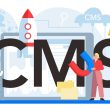Capital Equipment: How Does Firms Acquire, Manage & Value Capital Equipment?
Capital Equipment is a good that usually has a short life span of just over one year. It is used in the productive operation of companies and enterprises. You can even consider them as investments made by the company to support its manufacturing abilities.
What Is Capital Equipment?

Capital items are physical items that are required by companies to boost their productive activities. Companies actively invest in these assets to expand their operation or to keep pace with the new technologies.
If you see these assets from an accounting perspective, they are more similar to fixed assets. However, for you to consider them as fixed assets, according to the USA rules, the minimum amount needs to be $5000.
This amount is just the bottom line. There are companies that invest much more than this when it comes down to capital equipment.

We already know what the requirements are for capital equipment if we consider them assets. Let’s get down to the other details.
The following points are the best way to explain capital equipment as items.
- The minimum acquisition cost is $5000.
- Capital equipment is not limited to tax, freight, and installation costs.
- It cannot be disposed of by the consumables.
- It has a minimum life span of one year.
- Capital assets are tangible personal property.
Whenever a company purchases any assets in bulk, it can easily qualify for capital equipment. However, if the following conditions are met, you cannot consider them as inventory purchases.
- $15,000 for bulk equipment.
- $30,000 for bulk furniture or other assets.
Any equipment you purchase that adds value to your inventory and the investor’s existing assets can be considered a capital purchase. This total amount of the value will be then added to the equipment.
What To Include On Your Capital Equipment List?
There are a few items that you already own. These are assigned to your value. Below, I will discuss what to include on the capital equipment list.
When it is about capital equipment value, it means the non-replaceable value and the depreciated value. If you don?t know what the depreciated value is, you can include the original purchase date and the original purchase price.
When this is about financing purposes, this is one of the good strategies that will help you show what you have contributed personally to the start-up business. If you are not interested in investing in your business personally, you should be someone else.
On the other hand, for accounting purposes, you will have the required capital equipment information. While you are starting out, several companies don?t even realize what might require them to depreciate the equipment over a certain period. This period has been known in terms of changing.
In this case, computers are one of the best examples of this. It will often lose operational value before any financial matter. In recent times, much of the computer-related equipment has been considered as the decreasing purchase price of the computer. This is no longer depreciated, but this has been treated as an expense.
How Do Firms Acquire Capital Equipment?
Businesses usually plan the whole capital funds and acquisition of the capital equipment on a company-wide basis. These decisions are taken care of by the decision-making bodies of the companies, capital review companies.
This community accepts all funding proposals and demands from all over the firm and then makes a budgeting decision. The community decision reflects the betterment of companies and firms.
The whole process can take some time as it includes: considering the proposals, taking interviews of the representatives and sponsors, and then prioritizing the funding requests. The community starts authorizing the funding proposal from the priority list.
How Capital & Non-Capital Equipment Are Budgeted and Planned?
Businesses purchase capital equipment from capital expenditure. The funds are used from the firm’s capital budgets. Note that the capital asset budgets are different from the firm’s main budget of non-capital budgets, OPEX budgets.
Thus, for capital and non-capital spending budgets:
- Comes from two different sources: OPEX and CAPEX budgets, respectively.
- Are managed by two different managers.
- Have different criteria for budgeting.
Due to these differences, the representatives of the departments take extra measures to consider all the possible factors and significant action before proposing a fund.
How Do Firms Manage Capital Equipment?

It isn’t easy to manage capital equipment. Most firms have established lifecycle management software to manage capital assets. This practice aims to maximize the performance of the asset while minimizing the asset’s life cycle costs.
It simply means that the software application ensures that the capital assets spend most of their life in a productive economic life. Here economic life means assets have more ROI than their maintenance cost.
Every asset has an economic life, or rather managers expect them to have a certain life span. For instance, we have expectations from the assets: vehicles, furniture, machines, equipment, and much more, to perform for certain years before they need maintenance or replacements.
Every business and firm expects its equipment to perform and justify its acquisition throughout its economic life. Managers keep an eye on the performance of the capital equipment through the following:
- Return Of Investment (ROI).
- Return Of Assets (ROA).
- Total assets turnover.
- Return of Capital Employed (ROCE).
Valuing Capital Equipment
Capital equipment is valued differently than non-capital assets. For instance, the capital assets have report books that keep all the data. This data goes through a lot of changes in equipment life.
The report book value can change for the following:
- Accumulation and ever-changing depreciation value of the equipment.
- Value adjustments with the local taxes.
- Generally accepted accounting principle (GAAP).
Take Away
Items and assets may vary from industry to industry. For instance, a school’s Capital equipment (school desk, blackboards, microscope, computers, etc.) will be different from digital marketing agencies (software applications, tools, websites, etc.)
The acquisition of equipments is generally planned, managed, and valued on an organizational basis. And every organization has its terms when it comes down to Capital equipment.
Read Also:






















